Input interpretation

ethylene dibromide
Chemical names and formulas

formula | BrCH_2CH_2Br Hill formula | C_2H_4Br_2 name | ethylene dibromide IUPAC name | 1, 2-dibromoethane alternate names | 1, 2-dibromoethane | bromofume | celmide | EDB | ethylene bromide | soilbrom | soilfume mass fractions | Br (bromine) 85.1% | C (carbon) 12.8% | H (hydrogen) 2.15%
Lewis structure
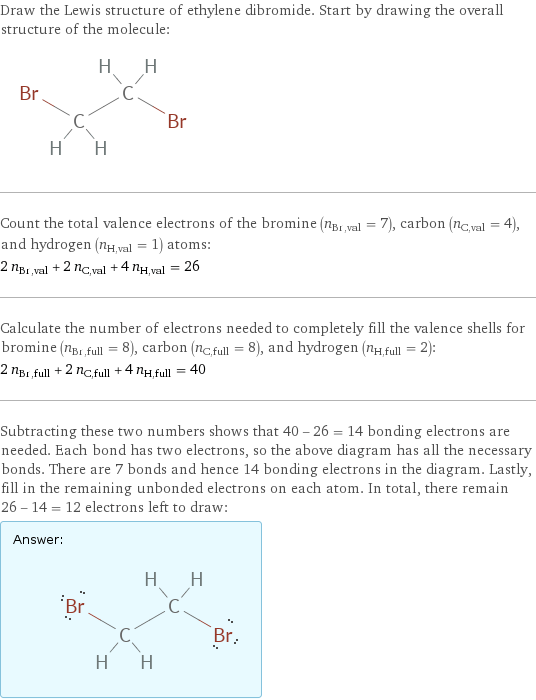
Draw the Lewis structure of ethylene dibromide. Start by drawing the overall structure of the molecule: Count the total valence electrons of the bromine (n_Br, val = 7), carbon (n_C, val = 4), and hydrogen (n_H, val = 1) atoms: 2 n_Br, val + 2 n_C, val + 4 n_H, val = 26 Calculate the number of electrons needed to completely fill the valence shells for bromine (n_Br, full = 8), carbon (n_C, full = 8), and hydrogen (n_H, full = 2): 2 n_Br, full + 2 n_C, full + 4 n_H, full = 40 Subtracting these two numbers shows that 40 - 26 = 14 bonding electrons are needed. Each bond has two electrons, so the above diagram has all the necessary bonds. There are 7 bonds and hence 14 bonding electrons in the diagram. Lastly, fill in the remaining unbonded electrons on each atom. In total, there remain 26 - 14 = 12 electrons left to draw: Answer: | |
3D structure

3D structure
Basic properties
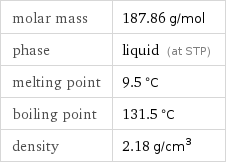
molar mass | 187.86 g/mol phase | liquid (at STP) melting point | 9.5 °C boiling point | 131.5 °C density | 2.18 g/cm^3
Units

Liquid properties (at STP)
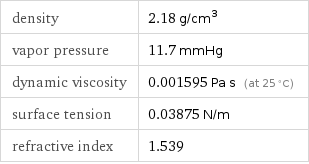
density | 2.18 g/cm^3 vapor pressure | 11.7 mmHg dynamic viscosity | 0.001595 Pa s (at 25 °C) surface tension | 0.03875 N/m refractive index | 1.539
Units

Thermodynamic properties
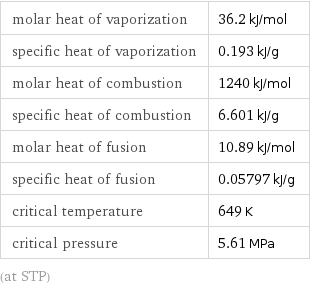
molar heat of vaporization | 36.2 kJ/mol specific heat of vaporization | 0.193 kJ/g molar heat of combustion | 1240 kJ/mol specific heat of combustion | 6.601 kJ/g molar heat of fusion | 10.89 kJ/mol specific heat of fusion | 0.05797 kJ/g critical temperature | 649 K critical pressure | 5.61 MPa (at STP)
Chemical identifiers
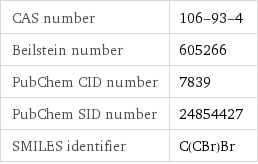
CAS number | 106-93-4 Beilstein number | 605266 PubChem CID number | 7839 PubChem SID number | 24854427 SMILES identifier | C(CBr)Br
NFPA label

NFPA label